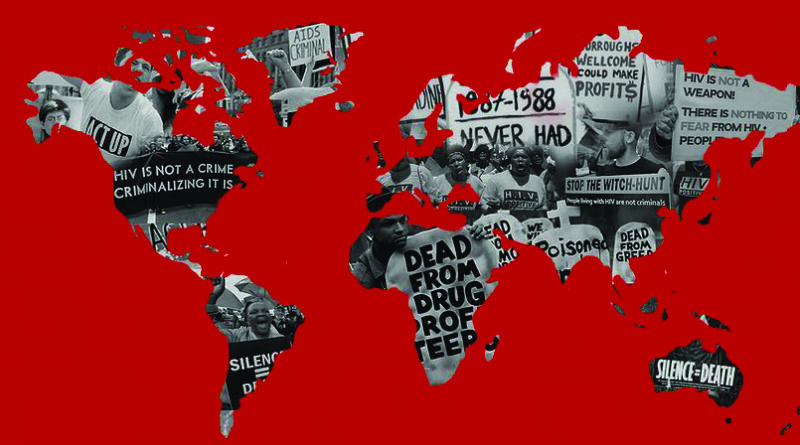35 Years of World AIDS Day: 64 Years since the First Identified case of HIV-1
By JP Emerson
December 1st marked the 35th Anniversary of World AIDS Day. Although the earliest identified isolate of HIV-1 came from an unknown male in the Congo in 1959, the first identified patient with HIV infection and AIDS was a Scandinavian man in the 1960s who had visited west-central Africa. Then in the 1970’s, sporadic cases among gay men in the United States and among Haitians were erupting which then led to the global explosion in the 1980’s and 90’s and the literal decimation of people across the globe.
It wasn’t until June 5, 1981, the U.S. Centers for Disease Control and Prevention (CDC) issued its first warning about a relatively rare form of pneumonia among a small group of young gay men in Los Angeles, which was later determined to be AIDS-related. Thus 1981 is generally referred to as the beginning of the HIV/AIDS epidemic. Since that time, tens of millions of people have been infected with HIV worldwide. So, although it’s been 35 years since the first World AIDS Day, HIV/AIDS has been in existence and destroying lives (particularly in our community) for decades longer.
As of 2022, UNAIDS, who leads the global effort in ending the public health threat of HIV/AIDS by 2030, reports that globally 33 to 45 million people are living with HIV. The year 2022 saw 1.3 to 1.7 million new infections (a reduction of 59% since the peak in 1995) and 29.8 million people were accessing antiretroviral therapy. Their estimate is that 32.9 to 51.3 million people worldwide have died from AIDS related illnesses since the start of the epidemic.
While progress has been made on many fronts regarding HIV/AIDS awareness and treatment, challenges persist globally. Disparities in access to healthcare services continue to exist within marginalized communities – including racial minorities, LGBTQ+ populations, women facing gender inequalities – highlighting the need for ongoing action towards inclusivity.
As we reflect on how far we’ve come since that first AIDS case struck fear into our hearts decades ago let’s celebrate this progress while recognizing that our work is far from finished!
We asked just a few of the many San Diegans who belong to the San Diego HIV Planning Group (whose goal is to provide services and reduce the impact of HIV in our local community) a handful of questions regarding the impact that HIV/AIDS has had in their lives. When coming up with the questions, the first one came to me in an instant and I’d like to answer it as well. The question is; When was the first time you heard of HIV/AIDS? I have such vivid memories of this time period. I can remember being eight or nine years old and hearing the term “gay cancer” all over the news which played in our house constantly. At that age I knew there was something different about me, I wasn’t 100% sure what that difference was, and I remember knowing very little about gay people. The only thing I knew about being gay was that it was generally frowned upon. But if I was gay and the fact that the news kept talking about this “gay cancer” left this young, confused, scared, queer kid absolutely anxiety ridden. I can remember going through a stage of crying myself to sleep many a night thinking I would grow up to be a gay man which meant I would automatically get this “gay cancer”, not knowing much about sex or how this disease could be contracted at that age, this was what hearing “gay cancer” did to a child’s psyche. I cannot be the only person who went through this irrational fear. Referring to what would later be known as HIV/AIDS as a “gay cancer” was just a spark that would help fuel the decades long stereotype that this was a disease that only affected gay men. This didn’t help in the fight for gay acceptance and liberation either!
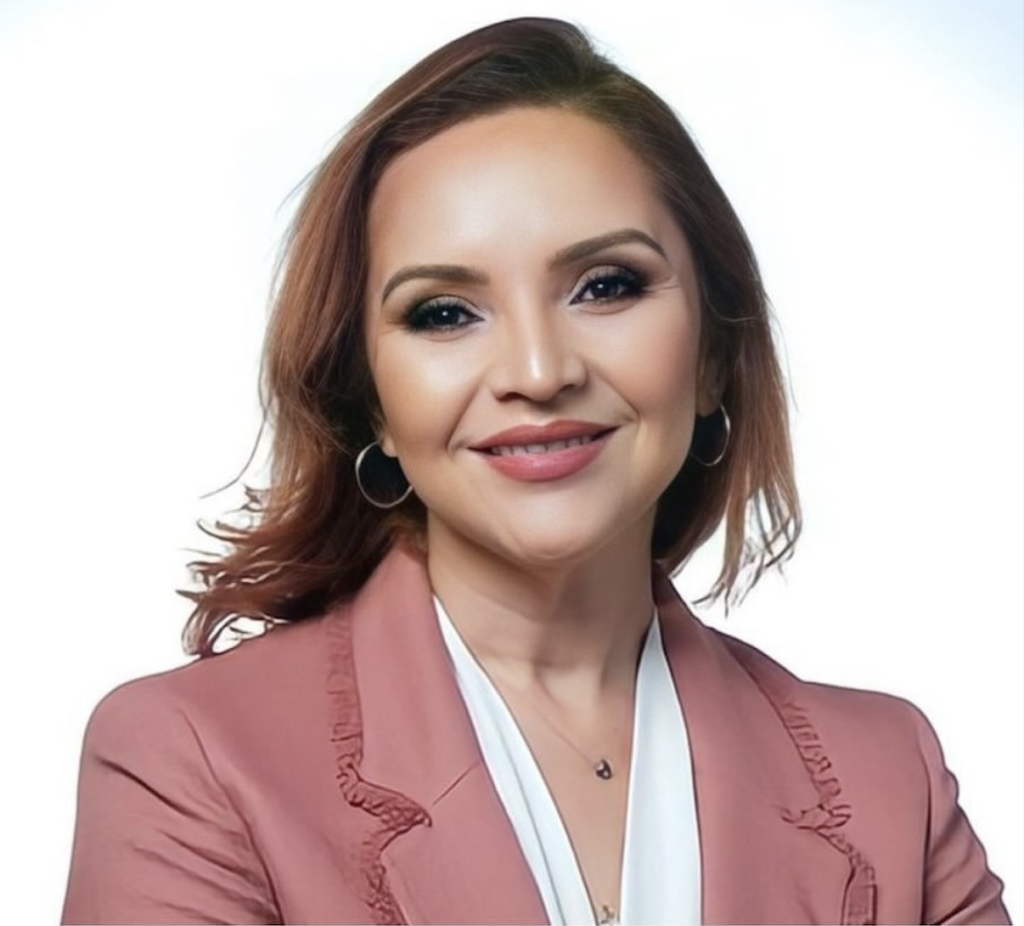
Karla Quezada – Torres
When was the first time you heard of HIV/AIDS?
I remember dancing to a famous song as early as 6 years old in the mid 80’s, known as “La Cumbia del SIDA” which was written by La Sonora Dinamita to raise awareness about the dangers of HIV/AIDS and encourage the Latino community to take precautions123. The song was released in 1985 and became a hit in Latin America including among the Latino community in the USA. I did not fully understand then but now realize that the lyrics did influence my understanding that HIV was affecting everyone, and we should all be aware of “el VIH/SIDA” because it was affecting our entire community regardless of age, gender, race/ethnicity, or sexual orientation.
Que se cuiden las mujeres de ese mal
Que se cuiden los muchachos es mejor
Es la nueva enfermedad que esta matando a la gente
Que no respeta la edad, ni tampoco se detiene
English Translation:
Let the women take care of themselves from that evil (disease)
Let the youth take care of themselves from that evil (disease).
It is the new disease that is killing people.
That does not respect age, nor does it stop.
How have you personally been impacted by HIV/AIDS?
I knew in elementary school that I wanted to be in the health field. I volunteered in healthcare settings at an early age and then attended a medical magnet high school that allowed me to volunteer at LA County Hospital where I first experienced connecting with people living with HIV. I knew then that I needed to do more and could do more to bring kindness and empathy to people who had no one else to lean on because of their HIV diagnosis.
I moved to San Diego to attend San Diego State University and pursued my dream, of a career in health, to make a difference. I met my husband and together we have a beautiful family with six kids. Early in our relationship, my husband shared with me the story of his brother-in-law, 4-year-old nephew, and then his sister passing away of “cancer” – all within a three-year period. Their youngest child almost two years old was healthy and thriving and in the care of the family. I did not think much about this “cancer” that would take three out of four family members – until years later. My husband was only 11 years old when his 4-year-old nephew died in his arms on day one of arriving from Mexico to the USA. The trauma, guilt, and pain are very much alive today. Who would have thought that a few years later after his sister passed away, he would meet a person who was seeking an opportunity to work in public health and support People Living with HIV(PLWH)?
I graduated college and started working in an HIV behavioral surveillance study in 2004. It took 5 years of me working and advocating for PLWH for my husband to share with me the truth of how his brother-in-law had HIV and then passed it on to his wife and unborn child. His parents have yet to have conversations about what happened to their daughter as the stigma and shame are very much palpable to this day. I took this as a powerful sign that it was our responsibility as a family to recognize our privileges, activate our power, and make a difference for people who due to fear, stigma, shame, and pain cannot advocate for themselves and are living with HIV. It is also our responsibility to arm people, especially our Latino/a/e/x community with education and tools to prevent HIV and other sexually transmitted infections.
What are your feelings about the progress in treatments and prevention?
There have been great strides in HIV treatment and prevention! As an HIV Community Liaison at Gilead, I help empower the community through education. At Gilead, we understand that medicine alone is not enough. It is the fusion of scientific innovation and the power of community that will bring about the change we all seek and help end the HIV epidemic.
How did you end up as a member of the San Diego HIV Planning Group?
I know I have certain privileges such as speaking English, having a higher education, and understanding how health disparities affect our diverse Latino/a/x/e community. I know that the only way to support others is to use my voice to support and represent my community.
I have had wonderful mentors who have guided me and helped me better understand the role the SD HIV Planning Group (previously known as HIV Planning Council) plays within the HIV community. Now, I am working towards paying it forward and supporting other people who would like to join and need extra support, guidance, and a boost to their confidence so they can also become advocates for the community.
What do you see on the horizon as to the possibility of ending the HIV/AIDS epidemic?
All of us in the community are making great strides in raising awareness, advocating for health equity, increasing access to education in places where it is needed most, and helping end the stigma around HIV. Stigma is one of the main barriers to our progress in ending HIV. It is progress towards ending stigma around HIV that motivates me to continue to work for change. This is another reason I love being an ally to many communities by supporting the educational efforts to help end HIV. We need more allies to join this fight! Allies who choose this journey must be clear that this is not a way to seek personal gain or recognition. This path carries a lot of responsibility because you will carry the tears, stories, pain, and successes of PLWHA or other affected individuals on your shoulders. My husband could not share his pain through words until three years ago. I became that voice for him, his nephew, his sister, and for others who are no longer with us.
As a family, we fight stigma together, educating, empowering, attending community engagement events, joining planning groups/councils, and engaging our own kids in our life purpose and we do this with love, respect, compassion, and commitment! Join us and be that ally that we need in the world! Commit on this 35th Annual World AIDS Day to be an ally to help end the HIV epidemic.
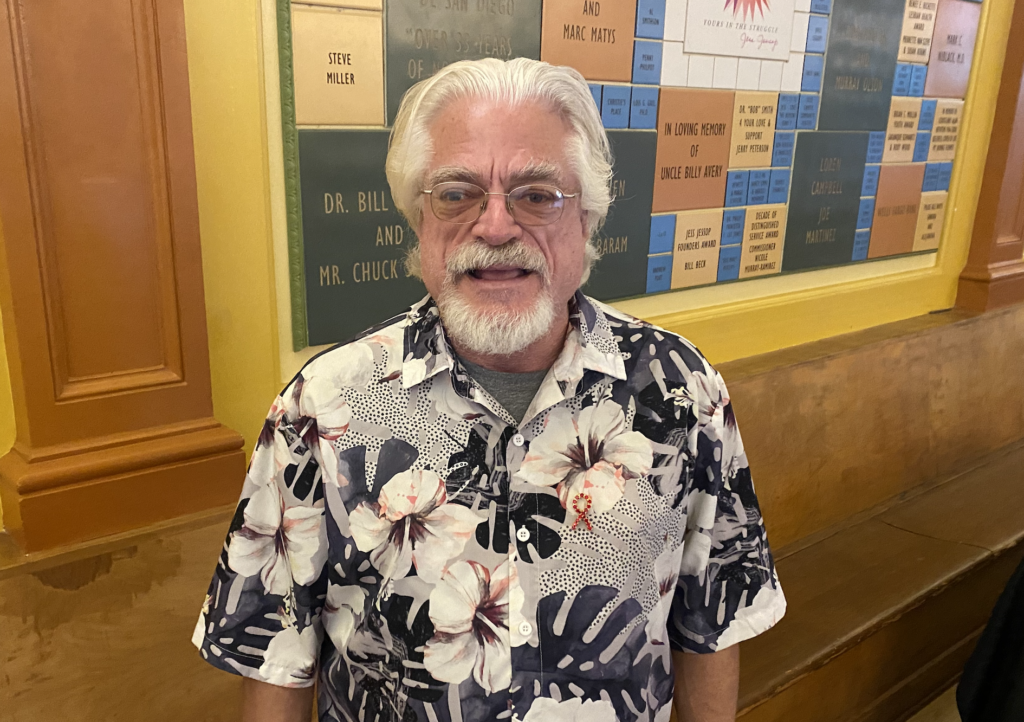
Michael Lochner
When was the first time you heard of HIV/AIDS?
1986 was the first time I heard about HIV/AIDS.
How have you personally been impacted by HIV/AIDS?
I became infected in 1986 after I met a man who I dated for four years. I initially got tested in 1990 but waited until 1994 to learn of my positive results. Also in 1994, I lost an uncle to AIDS and saw how he suffered from taking AZT as a treatment plan at the time.
What are your feelings about the progress in treatments and prevention?
I’m glad to see the advancement in both treatment and prevention. But we still have a long way to go before there is an actual cure.
How did you end up as a member of the San Diego HIV Planning Group?
I became involved with the planning process of the Ryan White Fund (parts A & B) in the county of San Diego since 2001. In 2009 I joined the previous planning council. In 2016 I was a part of the new integrated HIV planning group which was the result of the previous planning council and the prevention body merging as one. I became chair in June of 2021. I am involved in the process to ensure the voice of the HIV community is always welcomed at the table.
What do you see on the horizon as to the possibility of ending the HIV/AIDS epidemic?
There should be better collaboration and communication from all health providers to maximize the services they provide to the community. Health providers need to truly learn how to treat the whole person rather than just the disease. More opportunities for all members of the HIV community in leadership positions across the board.
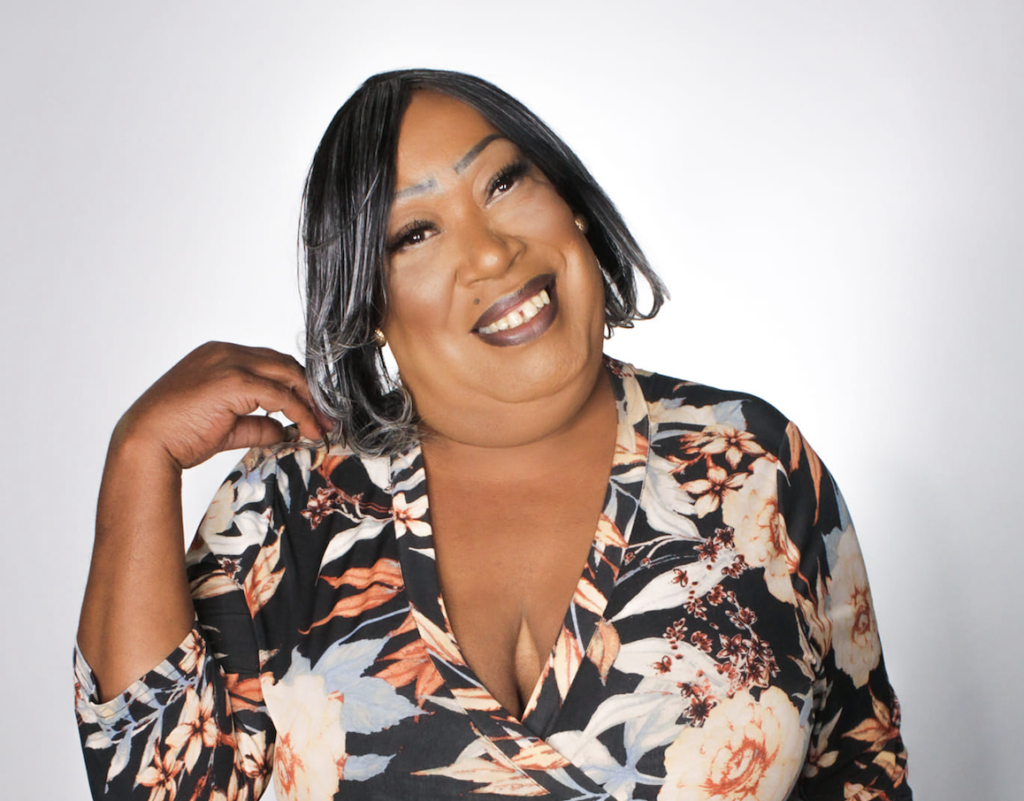
Pepper Price
When was the first time you heard of HIV/AIDS?
In the 1980s I was a caretaker for a young lady who was HIV positive.
How have you personally been impacted by HIV/AIDS?
Yes. In 2002 I became HIV positive.
What are your feelings about the progress in treatments and prevention?
It’s good but it could always be better. Providers still need to be more understanding, more research needs to be done, and the proper usage of pronouns for transgender and non-binary clients. Care should be given to the whole person rather than just the disease.
How did you end up as a member of the San Diego HIV Planning Group?
By attending as a constituent, it increased my thirst to truly be a voice for the transgender community and ensure that we were welcomed at the table.
What do you see on the horizon as to the possibility of ending the HIV/AIDS epidemic?
We need to do more work on how we treat each other across the board.
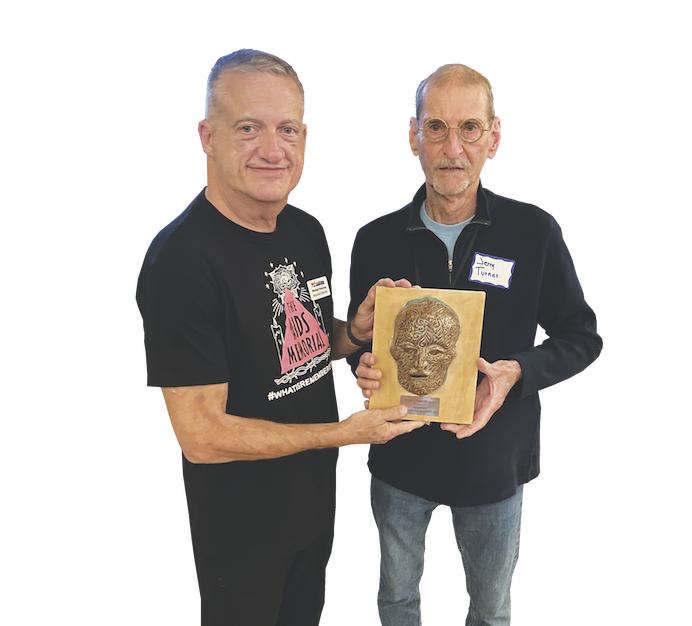
POZabilities, the recipient of the 34th Annual Dr. A. Brad Truax Award for outstanding contributions in the continuing struggle against the HIV/AIDS epidemic in our community.
POZabilities started in 2000, providing social support. A group of HIV+ men started meeting for coffee twice a week as an alternative to socializing in bars where they were often stigmatized. Since 2015 POZabilities, an all-volunteer organization, has produced 23 community forums on topics of interest to those living with HIV including HIV care, dating with HIV, cognition, hepatitis C, end of life documents, mental health, cannabis, nutrition, and exercise training.
The award was presented on December 1st, 2023, in conjunction with World AIDS Day.
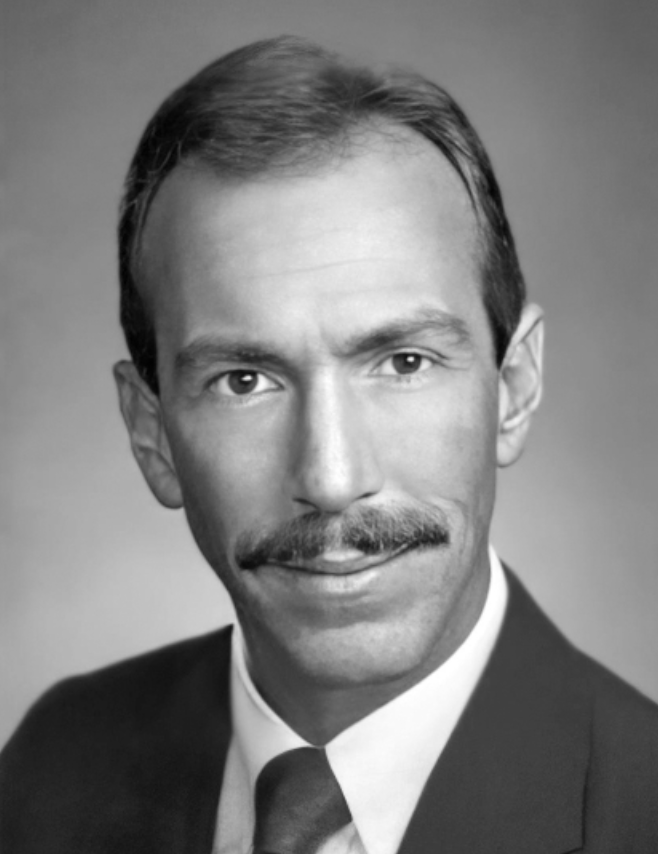
Dr. A. Brad Truax
Dr. A. Brad Truax was one of the first physicians in San Diego to treat people with AIDS. He became an advocate for laws to protect people with HIV/AIDS from discrimination all while becoming aware of his own AIDS diagnosis. Under his leadership in the 1980’s, the Regional Task Force on AIDS began to coordinate a community-wide response in the fight against the growing HIV/AIDS epidemic.
Dr. Truax was also an active member of San Diego Physicians for Human Rights, which coordinated the first organized community campaign to raise funding for HIV/AIDS services and successfully competed to bring the first State money for HIV prevention to San Diego in 1983. Brad Truax exemplified community service even while he was sick with the ravages of the virus. He died from AIDS-related complications in 1988 at the age of 42. In recognition of Dr. Truax’s outstanding contributions, the Regional Task Force on AIDS established the annual Dr. A. Brad Truax Awards in 1989.

